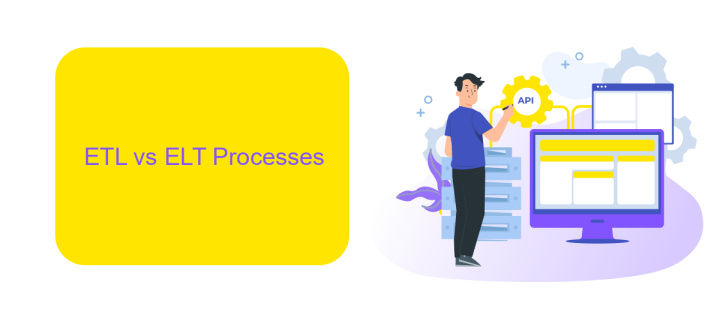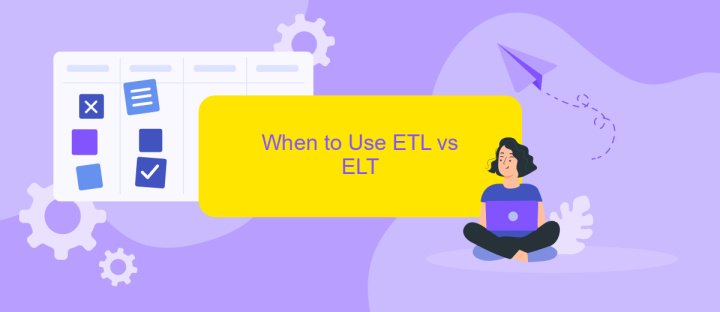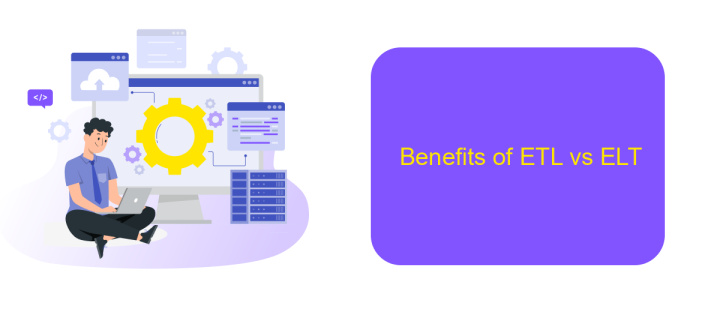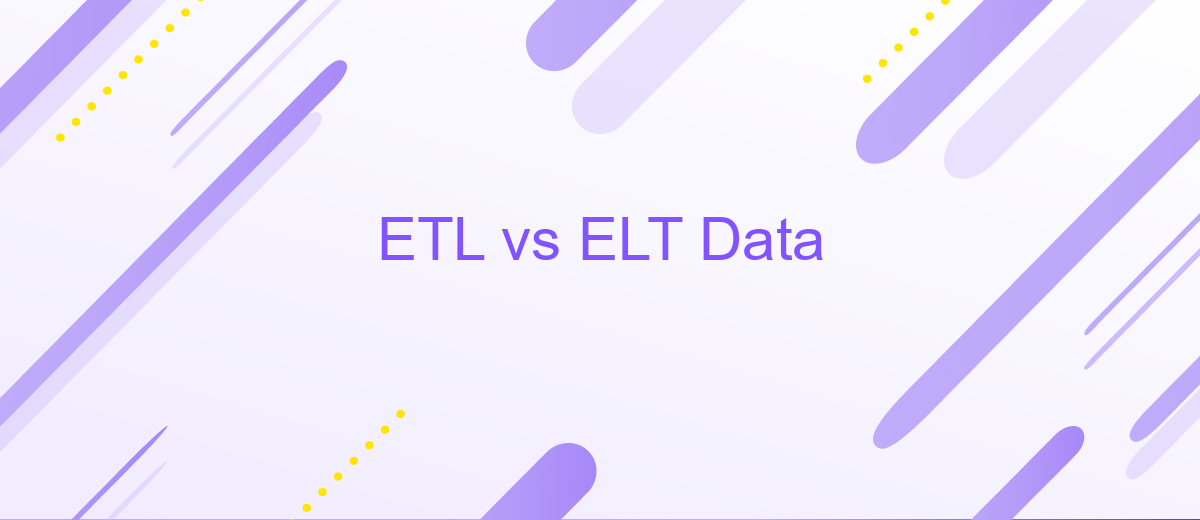ETL vs ELT Data
In the realm of data processing, ETL (Extract, Transform, Load) and ELT (Extract, Load, Transform) are two pivotal methodologies. Both aim to streamline data integration, yet they differ fundamentally in approach and execution. Understanding the nuances between ETL and ELT is crucial for organizations seeking to optimize their data workflows and harness the full potential of their data assets.
What is ETL vs ELT?
ETL (Extract, Transform, Load) and ELT (Extract, Load, Transform) are two data integration methods used to process and manage data from various sources. ETL involves extracting data from source systems, transforming it into a suitable format, and then loading it into a target database or data warehouse. ELT, on the other hand, extracts data and loads it directly into the target system, where the transformation occurs.
- ETL: Extract data, Transform it, and then Load it.
- ELT: Extract data, Load it, and then Transform it.
- ETL: Suitable for on-premise data warehouses.
- ELT: Ideal for cloud-based data warehouses.
Choosing between ETL and ELT depends on your infrastructure and specific needs. ETL is often preferred for complex transformations and compliance requirements, while ELT leverages the power of modern cloud-based systems for faster data processing. Services like ApiX-Drive can simplify the integration process, allowing seamless data transfer and transformation between various platforms, enhancing efficiency and accuracy.
ETL vs ELT Processes

ETL (Extract, Transform, Load) and ELT (Extract, Load, Transform) are two different data integration processes used to move and transform data from various sources to a data warehouse. In ETL, data is first extracted from source systems, then transformed into a suitable format, and finally loaded into the target data warehouse. This approach is beneficial when working with complex transformations and ensuring data quality before loading it into the warehouse.
On the other hand, ELT reverses the last two steps; data is extracted and loaded into the data warehouse first, and then the transformation occurs within the warehouse itself. This method leverages the power of modern data warehouses, which can handle large-scale data transformations efficiently. Tools like ApiX-Drive can facilitate both ETL and ELT processes by automating data extraction and loading, simplifying the integration setup, and ensuring seamless data flow between disparate systems. This flexibility allows businesses to choose the most suitable approach based on their specific needs and infrastructure capabilities.
When to Use ETL vs ELT

Choosing between ETL (Extract, Transform, Load) and ELT (Extract, Load, Transform) depends on the specific needs and constraints of your data processing workflows. Understanding when to use each approach can significantly impact the efficiency and effectiveness of your data integration processes.
- Data Volume and Complexity: Use ETL for smaller datasets and simpler transformations. ELT is better suited for large datasets and complex transformations, leveraging the power of modern data warehouses.
- Processing Environment: ETL is ideal for on-premises systems with limited processing power. ELT takes advantage of cloud-based platforms, providing scalability and flexibility.
- Real-Time Processing: ETL processes data in batches, making it less suitable for real-time analytics. ELT supports real-time data processing, offering timely insights.
- Integration Tools: Services like ApiX-Drive can simplify the integration of various data sources, making both ETL and ELT processes more efficient and easier to manage.
Ultimately, the choice between ETL and ELT depends on your specific requirements, existing infrastructure, and future scalability plans. By carefully evaluating these factors, you can select the most appropriate approach to optimize your data integration and transformation workflows.
Benefits of ETL vs ELT

ETL (Extract, Transform, Load) and ELT (Extract, Load, Transform) are two prominent data processing techniques, each offering unique advantages. ETL is ideal for on-premises data warehousing where data transformation occurs before loading into the storage system. This ensures that only clean, structured data is stored, optimizing storage and query performance.
On the other hand, ELT leverages the power of modern cloud-based data warehouses. By loading raw data first and transforming it later, ELT can handle large volumes of data more efficiently. This method is particularly beneficial for real-time analytics and big data processing, where speed and scalability are crucial.
- ETL: Ensures data quality before storage, optimizing performance.
- ELT: Utilizes cloud resources for better scalability and real-time processing.
- ETL: Better for complex data transformations before loading.
- ELT: Ideal for handling large volumes of unstructured data.
Choosing between ETL and ELT depends on your specific needs and infrastructure. Tools like ApiX-Drive can simplify the integration process, offering seamless connectivity between various data sources and destinations, whether you prefer ETL or ELT. This flexibility ensures that your data strategy aligns perfectly with your business goals.
Considerations for Choosing ETL vs ELT
When deciding between ETL and ELT, it's essential to consider the nature and volume of your data. ETL, which stands for Extract, Transform, Load, is ideal for smaller datasets and systems that require complex transformations before loading into the destination system. It's particularly useful for on-premises databases where data needs to be cleaned and structured before storage. On the other hand, ELT, or Extract, Load, Transform, leverages the power of modern cloud-based data warehouses, allowing raw data to be loaded first and transformed later, making it suitable for large-scale, high-volume data operations.
Another important factor is the integration capabilities and ease of use. Services like ApiX-Drive can significantly simplify the process of setting up and managing data integrations, whether you choose ETL or ELT. ApiX-Drive offers a user-friendly interface and robust automation features, enabling seamless data flow between various applications and databases. This can be particularly advantageous for organizations looking to streamline their data processes without extensive technical expertise. Ultimately, the choice between ETL and ELT should align with your specific data needs, infrastructure, and integration requirements.
FAQ
What is the main difference between ETL and ELT?
When should I use ETL over ELT?
What are the advantages of using ELT?
Can ETL and ELT be automated?
Is it possible to switch from ETL to ELT?
Do you want to achieve your goals in business, career and life faster and better? Do it with ApiX-Drive – a tool that will remove a significant part of the routine from workflows and free up additional time to achieve your goals. Test the capabilities of Apix-Drive for free – see for yourself the effectiveness of the tool.

